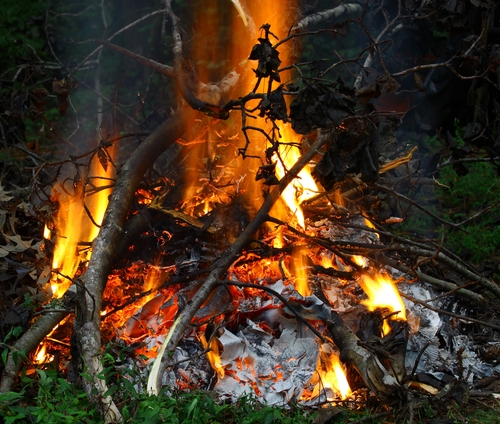
One other potential cause of large-scale wildfires involves situations where containment of a "prescribed" or "controlled" burn is lost. Although the terms are generally used interchangeably, prescribed and controlled burns are actually different. A prescribed burn is a fire set under specific weather conditions and with sufficient personnel and suppression equipment to achieve certain land management objectives. When utilized properly, a prescribed burn can enrich soil by adding nutrients and making the plant community healthy again. Conversely, a controlled burn is a fire set without specified weather conditions or vegetation management objectives. Common examples of controlled burns include burning brush piles or large quantities of trash.
Because of the inherent risk of either type of burn escaping, most states have enacted statutes governing liability for damages caused by an escaped fire. Many of the statutes actually recognize the importance of prescribed fires for wildfire risk mitigation, and provide specific instructions for ensuring that the burn is completed in a safe manner. Many of the statutes also have detailed procedures for notifying neighbors, applicable state agencies and local fire authorities before a burn is conducted.
In general, most states with prescribed burn statutes generally fall into one of two categories: those which follow the negligence rule, or those which adhere to a strict liability approach. For those states adhering to the negligence rule (and the vast majority do), it is necessary to show that the individual conducting the burn was negligent or failed to exercise the requisite degree of care to impose liability. Typical examples of acts and omissions that may constitute negligence include failing to properly utilize fireguards or barriers during the burn, attempting to burn at inopportune times, or failing to develop and follow a prescribed burn management plan ("PBMP")..jpg)
Only four states (Connecticut, North Dakota, New Hampshire and Oklahoma) adhere to a strict-liability approach for prescribed burns. In general, those states impose liability on the landowner and/or individual responsible for the burn for damage from an escaped fire regardless of his or her efforts to safely implement or control the burn. For example, the prescribed burn statute in Oklahoma specifically imposes liability on the landowner who owns the land where the fire originated for actual damages sustained by third-parties. Essentially, if a fire escapes, negligence is assumed and the only remaining issue to determine is the amount of actual damages sustained by third-parties. Interestingly, research has shown that the frequency of escaped prescribed fires tends to be lower in those states with more stringent prescribed burn statutes.
If confronted with damages caused by a prescribed burn, it is essential to determine whether the state where the burn occurred has a specific prescribed fire law. When reviewing the statute, particular notice should be paid to whether notification requirements and/or prescribed burn procedures were followed. It should also be determined whether the state follows the negligence rule or adheres to a strict-liability approach. For those states that adhere to the strict liability approach, there will typically be statutory language



